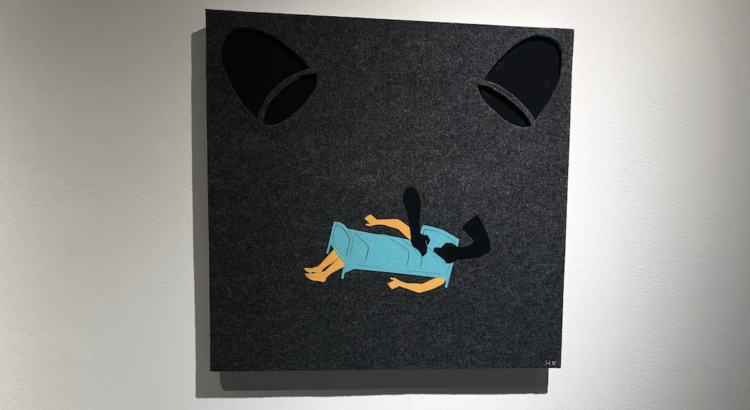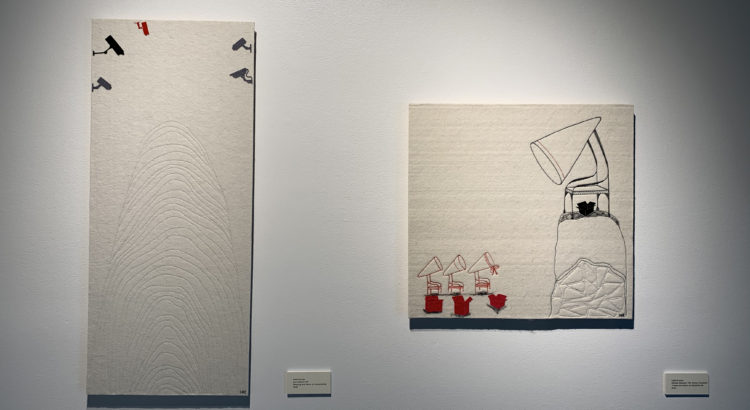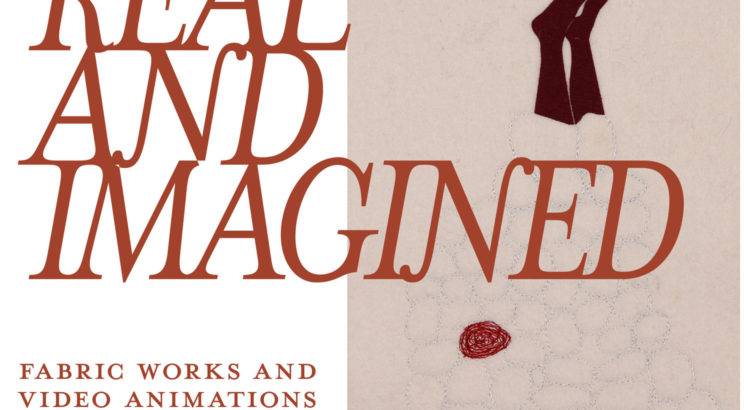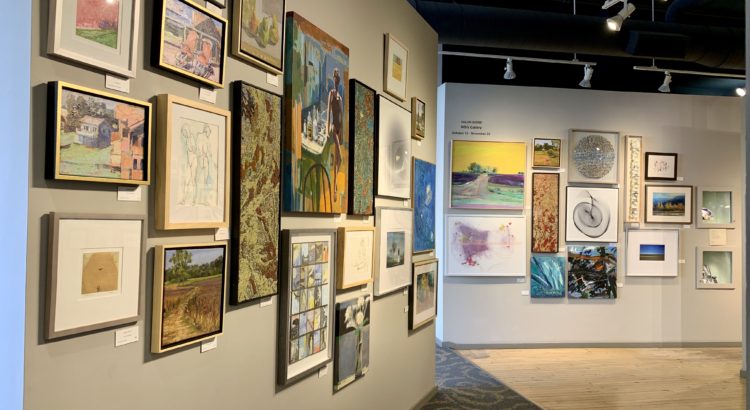I walked into the gallery with a stomach ache, and walked out with an even bigger knot.
Heidi Kumao has put together an excellent portrayal of the gaps in justice systems in cases of sexual violence. It is often characterized as a short list of events, identifiable with clear beginnings and ends. We know who the players are (we call them aggressors, rapists, victims) and what should happen to each party after the event has occurred (getting fired, jail time, police report, testifying). We know what counts and what doesn’t, and what responses are valid. Of course, none of this is actually true; there are countless ways in which someone can be affected by sexual violence, and to reduce such experiences down to more easily digestible stories is a powerful insult, putting into question a violated person’s reality.
The layout of Kumao’s pieces is minimalistic on purpose, each stitch and fabric scrap made infinitely more intentional. And while the arrows on the floor (to direct single-direction traffic in the gallery, allowing for social distancing) were not a part of the exhibition, they fit the theme: there is one way to reconcile with and bring justice to sexual violence. It’s procedural.
A textile medium was an inspired choice: fabric is manufactured neat and orderly, but on close inspection it has a propensity to unravel, to knot, to incorporate impurities, to lasso in sharp burrs, to tangle. It has holes in it, all over the place, it’s easily pierceable, complicated, diverse in stitch and texture. Lint and fuzz make abrasion evident, stains remain embedded. It calls up thoughts of bedding and thus the fiction of dreams, as the exhibition title suggests. It’s also representative of traditional womens’ work: sewing, mending, weaving, embroidering.
Her motifs capture well the double-edged properties of gaining a platform for self-advocation.  Thechair is a seeming promise of a seat at the table, but it always comes paired with a spotlight, and an audience (the Langston Hughes reference is intentional, given the added layer of opposition that women of color face in their search for justice). Connections are tenuous threads, which grow into chaotic knots and simplify into lines, noting the difference between reality (complex stories, lasting results, diverse reactions) and the imagined (straightforward descriptions, single narratives).
Thechair is a seeming promise of a seat at the table, but it always comes paired with a spotlight, and an audience (the Langston Hughes reference is intentional, given the added layer of opposition that women of color face in their search for justice). Connections are tenuous threads, which grow into chaotic knots and simplify into lines, noting the difference between reality (complex stories, lasting results, diverse reactions) and the imagined (straightforward descriptions, single narratives).
The most poignant piece to me was one called “Reluctant Narrator,” a little square scrap of felt maybe six inches wide. One chair sits with another, a tangle of thread upon it, which the other chair is pulling into a thick, straight line. 
It’s become the norm to accept heroism only in those able and willing to share their trauma with strangers, putting themselves on a stage and accepting skepticism and hatred in exchange for benefitting the good of others. We welcome the poised, and lack respect for the silent.
The exhibition will be on display until December 4th. The gallery is open 2-7pm Tuesdays and Fridays to anyone with an Mcard; unfortunately, they’re not presently able to open to the public. However, they have a wealth of online resources like discussions with their featured artists and news about goings-on in the Ann Arbor art scene on their website, https://stamps.umich.edu/.










 WSG member
WSG member 
